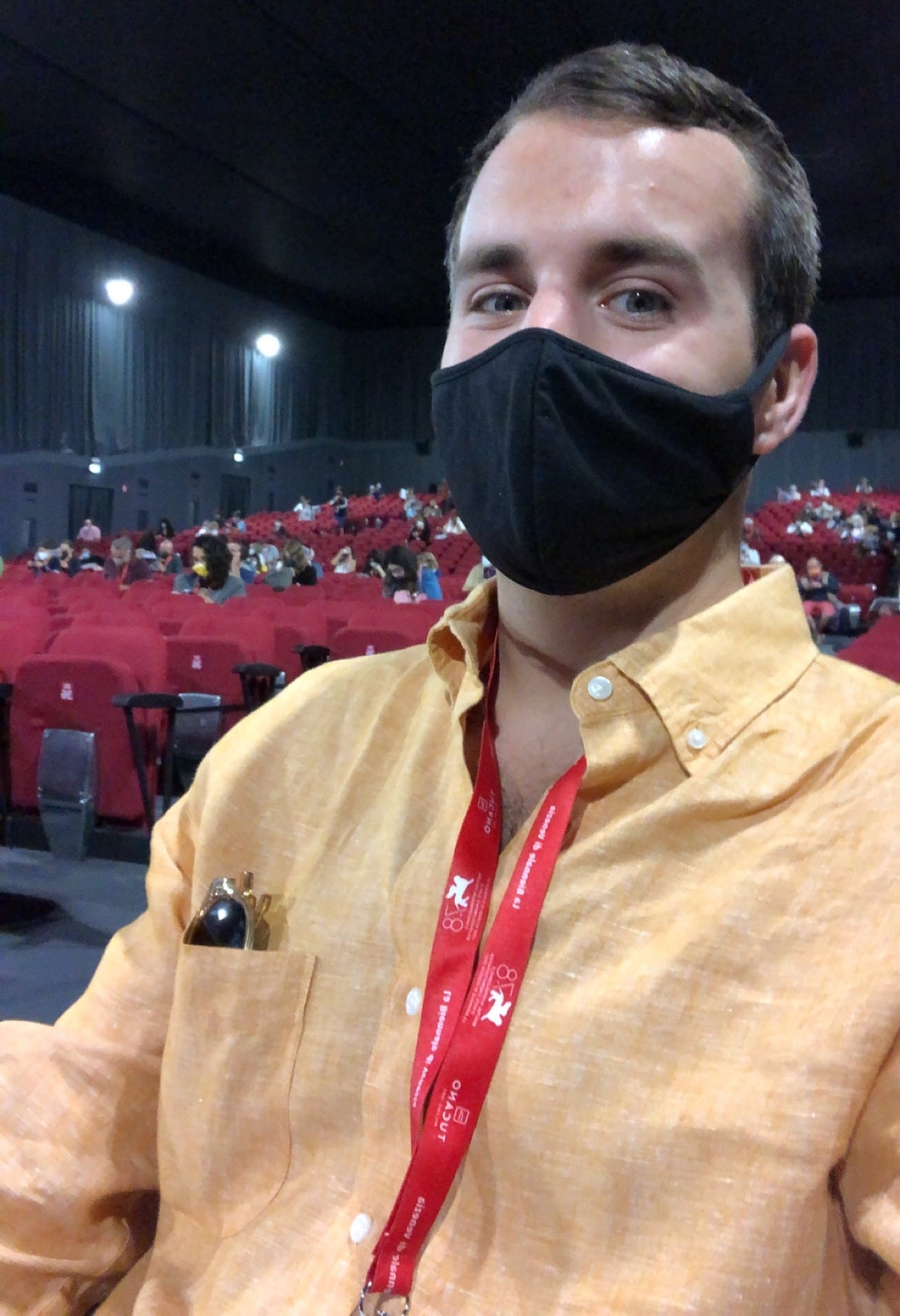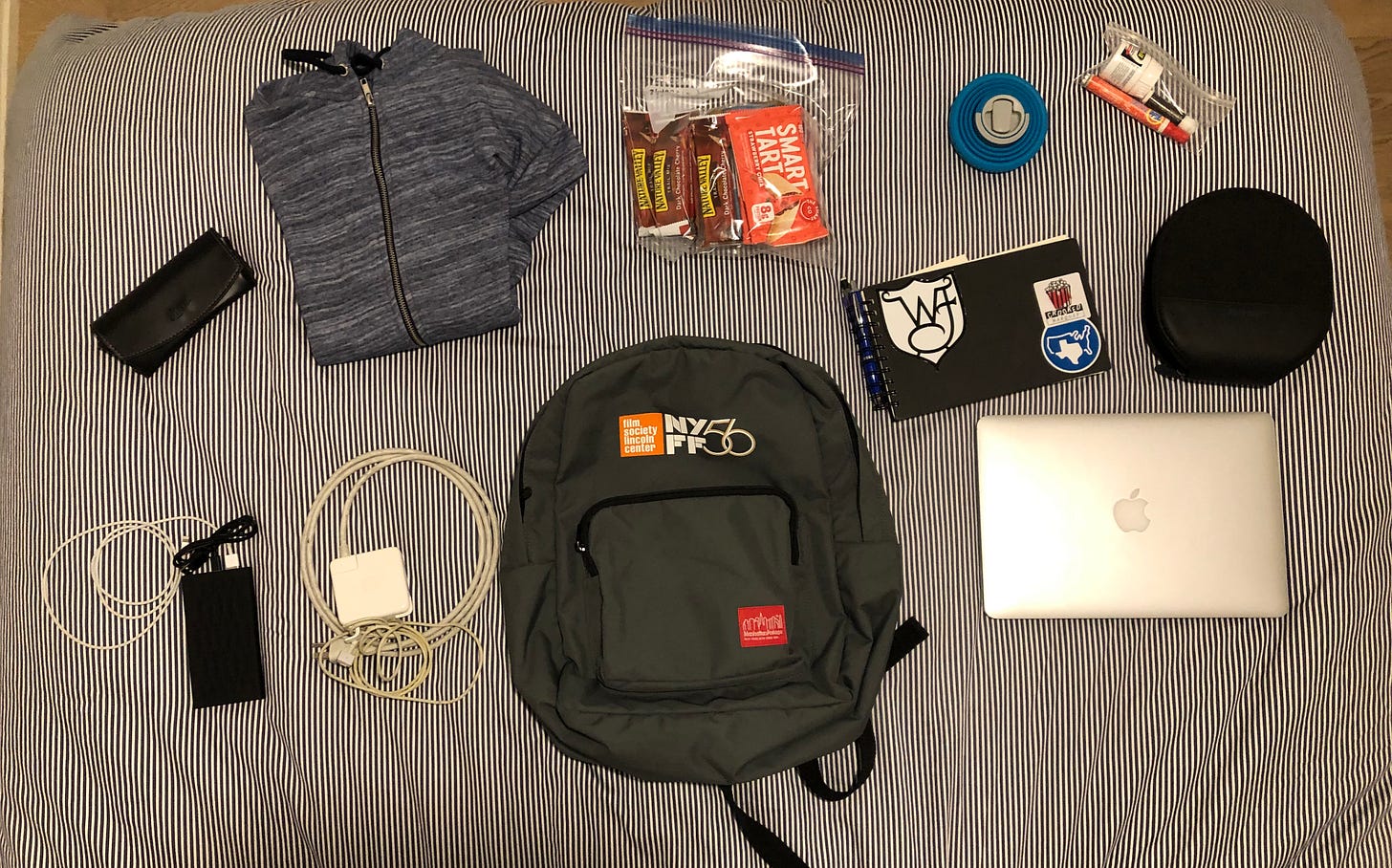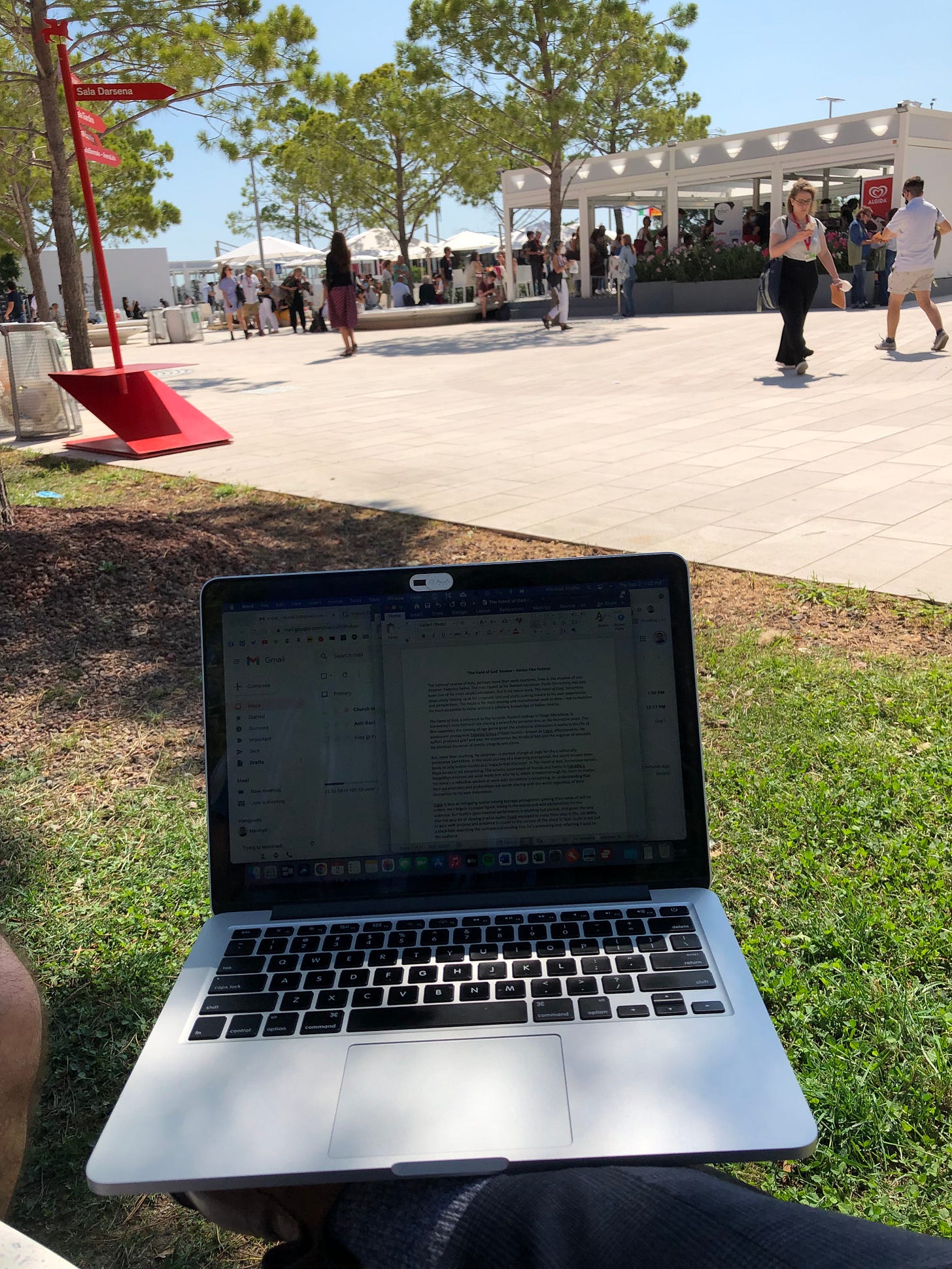Welcome to the first piece of subscriber-only content on Marshall and the Movies! Thanks so much for your faith and support — it really does mean a lot, and those aren’t just words. For those who want to read more on this topic, all is not lost! You can read this on the web version of the newsletter as soon as you subscribe.
Since they held up many a newsletter delivery over the past few months, I thought I’d start the premium content component of Marshall and the Movies by providing some insight into what exactly it is I do at film festivals. Why are they so all-consuming? What inspires me to fan the flames of exhaustion to chase this specific thrill? Why do I take weeks of PTO from my job to … do more work? My hope is that the below, inspired by the format of The Cut’s “How I Get It Done” series, will help clarify the method behind my madness.
On my morning routine:
I get up, at the bare minimum, two hours before the first movie of the day. At a big festival, that’s usually around 8:30 AM. People think it’s crazy when I tell them I start this early, but it’s really not unheard of in most industries to expect people to power on their brains and begin working around this time. I tend to be more of a morning person anyway, so this doesn’t really bother me.
But I do know that it’s not fair to either myself or the movie I’m supposed to be evaluating if I haven’t gotten some food and coffee in my system beforehand, thus the generous buffer. Sometimes I have been known to pack a large number of snacks in my suitcase that I carry in my festival bag, too. It’s easier to get a substantive breakfast early in the morning before the festival day really picks up. Whether I’m shuttling between screenings, trying to file a piece, or idling in a queue, there’s no guarantee I’ll get much in the way of lunch or dinner.
Worst case scenario, I have some extra time to think, relax, and process what I’ve seen the day before.
On preparing, not planning:
As someone who is regularly quite regimented and routinized, the festival process humbles me due to how much of it comes together at the last minute (or on the fly). I’ve long since given up on the idea that it behooves me to reach out weeks in advance around securing screening tickets or pinning down interview availabilities through publicists. They’re not going to know until crunch time, at which time I’d be following up anyways, so I’ve just stopped doing long-lead outreach in favor of trying to connect closer to the event itself.
I now accept that the weeks between a lineup announcement, a schedule drop, and the festival itself are going to be tentative at best. I’ve since channeled those anxieties over an itinerary written in pencil into doing heavy prep work. Generally, once I know the movies that I might see, I’ll pull together a giant list of relevant titles that might be relevant to reference in my coverage. This is usually previous films by the director and occasionally from one of the stars. It helps get my mindset in the right place about where these artists are coming from and where they might be going.
I’m taking a different type of notes for these than if I were writing a straight review. Usually, I’m just jotting down a few relevant details in the Notes app that I can return to if I need a thought-starter later. Oftentimes, I find that watching (or re-watching) through the very specific lens of a single contributor helps me isolate something special about their talents. If I’m grasping at straws trying to figure out something to peg a review on, I know that I can at least fall back on auteurist-style analysis or drawing parallels to earlier works.
On scheduling:
At a bare minimum, I try to see at least three movies a day at a festival — that’s easy for me by now. Four is busy yet doable. At five, my brain starts to break. I’ve done six a few times and would not recommend it. Your eyelids begin to feel like dead weight, and it’s just generally not very pleasant. Unless assignments would require it, I think the six movie days are over for me.
One of the happiest days of this hopeless Type A’s year is when a festival schedule drops. I love printing them out if possible and marking them up, trying to come up with any and all combinations and possibilities so I can pivot on the ground if need be. The biggest thing for me to determine on the first pass is whether there’s going to be anything that I can only see within a single time slot. That’s going to exert a large influence over how the rest of my schedule shapes up, and I need to know these things from the get-go. As I do this more, I also look at blocs that maybe have fewer titles of interest and see if I can use that for writing or rest.
I also build in a gut check of who and what I’m seeing, a process I developed when writer Monica Castillo made me conscious of critical blind spots when I covered my first Sundance in 2016. Am I only seeing really high-profile titles? Only movies by men? By white artists? By Americans? If I find I’ve gravitated toward the obvious movies that I can just see in a few months anyway, I make sure that I expand my horizons since that’s really the point of the whole film festival experience.
On sleeping:
I don’t know her.
On building a festival bag:
I need to be able to operate for an entire day without going back to my lodging. The below is a diagram of what I had in my bag at TIFF 2019 to keep myself going through some grueling days.
On remaining open to possibilities:
To have a festival schedule is to accept the possibility that you might have to rip it apart and restart to accommodate a buzzy title. This was particularly difficult at Venice this year, where tickets to screenings had to be booked 74 hours in advance via their app. (This led to a new list in my Reminders app to ensure I’d be on the spot to get my planned berths.)
But under normal circumstances where all it takes is to show up with a badge, this is much easier – and one of the most rewarding things about attending a festival. It requires putting yourself in a place to hear what people are reacting to, both by having your listening ears on the ground and curating social media feeds to gauge instant reactions and reviews. I’ll never forget the time I tore apart my Sundance schedule in 2017 to catch a little movie that set the slopes of Park City ablaze: Call Me By Your Name. It required me to run through a literal blizzard, mind you, but no one can say I am not a warrior for the cinema.
On avoiding hyperbole:
Festival hype is real. You’re viewing things within a porous bubble, oftentimes with the most engaged and excited audiences to ever watch this movie. You’re among the first to see these titles, which can be both good and bad. An unformed critical consensus means you’re forming your opinions more independently, but it’s easy to let that feeling of discovery (or occasional disappointment) blind you to what the movie is actually doing.
Am I perfect at avoiding hyperbole? No. Do I look back on some festival reviews and feel like I might have overrated something I had a visceral reaction to? Underrated something I needed to mull over more? Of course. I just try to stay more conscious of how the viewing environment may sway my opinion in either direction and try to focus more on how the movie works rather than how it made me feel. It’s also helpful for me to check that the writing is not overly reliant on adjectival phrases to convey my assessment. (These nuggets of wisdom also apply outside of a festival setting for criticism, too.)
On finding time to write:
I’ve gotten a lot better at pre-writing so I’m never really starting the process while sitting in front of a blank screen. Around the third act of the film, my thoughts have really started to solidify around what a film is. Barring some kind of jarring recovery or collapse, I have a general idea of what my angle on the movie is and how I’m going to approach describing it to the reader. Even if the ending does alter my overall opinion on the film, that’s something I can often boil down to a parenthetical or an offhanded clause.
I’ve also figured out that I can cobble together these things in a piecemeal fashion, especially in the Notes app on my iPhone but also just wherever I can find the space. To be honest, it’s also how I wrote this post (and I came back in and inserted this sentence later). I’ll be waiting in line or walking between venues, and a half-formed idea or a crucial sentence will pop into my head. I make sure I instantly document it so it’s not lost in the vagaries of my mind. Sometimes, writing a review can really be as simple as finding the connective tissue between these thoughts.
On observing my surroundings:
This is something fairly new to my festival process, especially as I’ve gotten close to a decade of attendance under my belt and feel comfortable writing about them as events in their own right. A festival cannot help but assume the character of the place where it is planted. To look and listen to what’s offscreen at a festival has proven as interesting a field to explore as the movies themselves. I find this involves granting myself the permission to wander physically and mentally, a tough thing to do in a place where the opportunity cost might mean missing the launch of a new classic. But this has benefits both for my wellbeing and writing, I find. Watch this space, as they say, as I think I’m only scratching the surface on this new line of intellectual inquiry.
On loving the work:
Don’t think for a second that I forget as I’m at festivals, oftentimes with extraordinary access at scant financial cost, how lucky I am to be doing this. Festivals are the sedentary equivalent of running a marathon, and there are few other things I’d beat up my calendar, body, and mind for. I’m so grateful to be on the ground floor with some of these movies as they begin their journey through the world. It’s the closest I’ll ever come to writing the first draft of history, and I take that responsibility very seriously while I chase the rush of excitement and discovery that I think I’m probably addicted to now.
Yours in service and cinema,
Marshall













you inspire me!